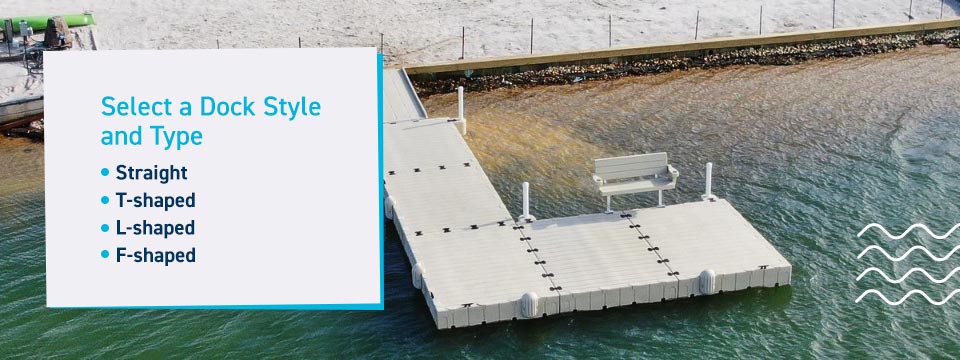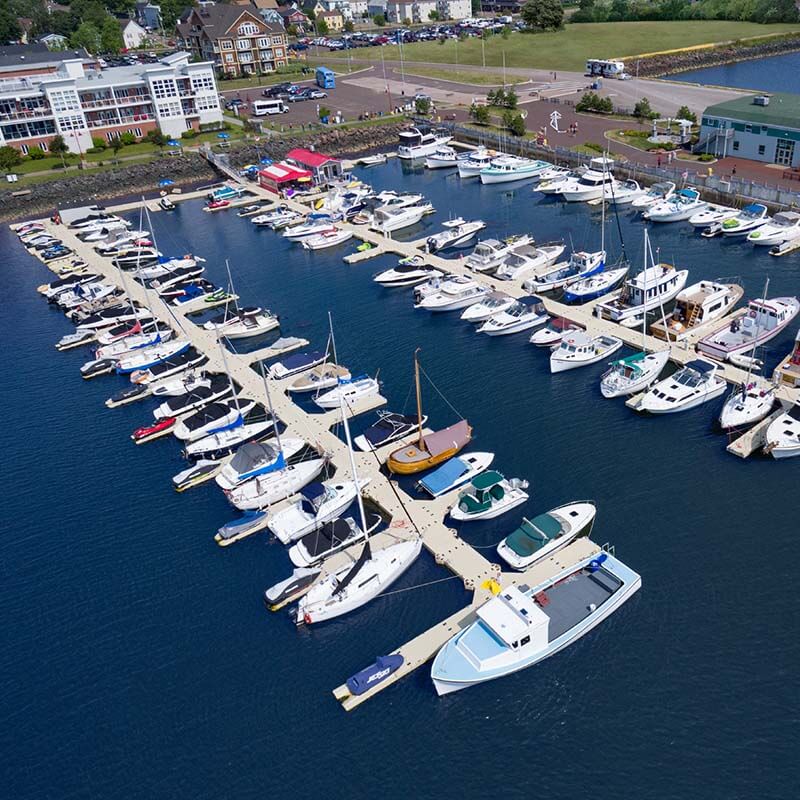Commercial docks can be powerful tools that help businesses expand their services and attractions. When you want to reach and impress customers, a floating commercial dock can increase your water access and improve the visitor experience. However, choosing a commercial dock comes with several considerations and steps you must follow.
This guide will give your business the essential information you need to find the right dock for your application and audience.
1. Analyze and Choose the Size
Floating dock design for commercial docks and applications depends on several factors. Understanding your dock’s functional requirements and necessary specifications enables companies to select the right commercial dock for their needs.
You can determine your dock based on the following elements:
- Function and purpose: Commercial dock applications are diverse and have unique requirements. Many tourist destinations include commercial docks that invite visitors to explore the waterfront and take in views. Companies and hotels can offer various aquatic activities, like boat tours or personal watercraft (PWC) rentals. Restaurants use commercial docks to provide waterfront seating or bring in fresh local fish. Design elements will vary based on whether visitors use them to enjoy the sunset or to board a boat or PWC.
- Accessibility: Companies will need to determine how available they want their docks to be. Many commercial applications invite visitors to explore spaces whenever they want, while others block them until their intended use.
- Faculty involvement: Establishing a dock requires care and attention. You will need employees to help perform maintenance and ensure safety when the dock is open for visitors. Boat tours and rentals require employees present to help visitors safely move from the dock to their vessel, while open docks for visitors might need fewer employees to ensure people’s safety as they walk around.
- Vessel volume: Size will depend on various factors. Docks used to anchor vessels will need perimeters that reflect their traffic level. Launching points for PWCs will require less space than commercial applications docking several boats in one place. Alternatively, foot traffic will determine how much surface area you need. Long queues for boat rentals, restaurant space and open areas for walking will demand larger dock sizes.
Understanding your dock’s requirements in the planning stages will help you make a stronger investment when choosing the right commercial dock for your business.
2. Consider Physical Factors and Water Conditions
Your location’s characteristics will influence several features of your commercial dock. While large commercial marinas might have standard applications or needs, each area has different challenges that can impact the dock. Consider the following elements when choosing your dock:
- Water conditions: Various waterways have different behaviors and patterns. Some areas experience quicker, more drastic tide changes, while others might have strong currents running beneath docks. Understanding your water conditions can determine what features and practices you’ll need to provide structural integrity and safety.
- Weather patterns: Your local climate will influence various aspects of dock design. Experiencing frequent powerful storms can lead businesses to choose more durable materials. If your area has harsher winters that cause water to freeze over, investing in flexible solutions where you can store your floating dock can preserve its quality.
- Ground conditions: When you need to anchor your dock and vessels to the ground, understanding the ground conditions below the water and how they will impact your dock type and functionality is essential.
Knowing your area thoroughly can help your business identify potential problems before installation, so you can take a more proactive approach.

3. Select a Dock Style and Type
Once you understand your business requirements, visitor needs and area conditions, you can begin to consider various design specifications. Commercial docks come in multiple shapes and configurations to meet various applications. Some commercial dock styles include:
- Straight: Straight docks are classic and traditional. They will head in one direction, creating a simple path for visitors, making them great for queues or rentals where customers need to direct themselves. They offer ample water access and space for vessels to anchor.
- T-shaped: If you want a farther reach into the water, a T-shaped dock can allow people and vessels to enjoy deeper waters while on solid ground. The T-shaped dock has a straight component that meets a perpendicular part to create an uppercase T. People can walk to the end to enjoy the aquatic scenery, or companies can dock more boats there.
- L-shaped: L-shaped docks maximize surface area to create more space for people. This configuration includes an extended perpendicular portion that connects to the main straight dock at a right angle. Because it provides more space, you can use L-shaped docks for long queues to get on boats, rentals and restaurant seating.
- F-shaped: Companies might need increased surface area for several applications. F-shaped docks add a second perpendicular component to the L-shaped configuration, offering more available dock space to visitors. This shape is helpful when you must anchor multiple vessels in the same area because it optimizes dock and water space.
While shape usually relates to function, your material type often correlates with your maintenance capacities. Most docks come in wood, aluminum and plastic options, but each offers unique benefits and challenges.
Wood is classic, but it requires more maintenance. You must paint or seal it to prevent it from rotting and splintering while inspecting it for existing damages. You have to repair it quickly to avoid more comprehensive difficulties.
Aluminum is excellent at resisting rust and increasing durability. However, it can be costly for businesses, making it hard to justify the purchase. Alternatively, plastic is long-lasting, easy to maintain and resists damage. Manufacturers can treat plastic to withstand UV rays for increased durability and quality, and it won’t splinter, crack or wear. You can use it in fresh or salt water, increasing its applications.
To maintain it, you’ll just need to wash it occasionally to remove barnacles and algae growth. A plastic dock can benefit your commercial enterprise when you want to provide the best care for your customers.
4. Install Your Solution
After purchasing your dock, you will need to install it. When you invest in a commercial floating dock from EZ Docks, the installation process is so straightforward and efficient that you can complete it yourself. As you prepare, you will need the following:
- Tools: You can complete EZ Docks installation with a hammer, wrench, screwdriver, ratchet, EZ Dock In-Water Coupler Installation Tool and EZ Dock Drive Tool Socket Adapter. EZ Docks outlines the various tools you’ll need to implement your dock solution for increased awareness.
- Team: Most projects only need one other person to help with installation. However, large projects might require a more comprehensive team to increase efficiency.
- Configuration: Large commercial marinas and other businesses might require more complex arrangements and shapes. EZ Docks solutions are flexible, allowing you to arrange components how you need.
Once you have everything prepared, you are ready to launch your new commercial dock.

Explore EZ Dock’s Complete Line of Commercial Docks
When you need flexible, comprehensive commercial docking solutions, EZ Docks’ collection of floating docks and accessories can meet several business applications. Our plastic EZ Dock models help optimize waterfront space while reducing maintenance.
Contact EZ Docks today to discover how our floating docks can benefit and support your business.

